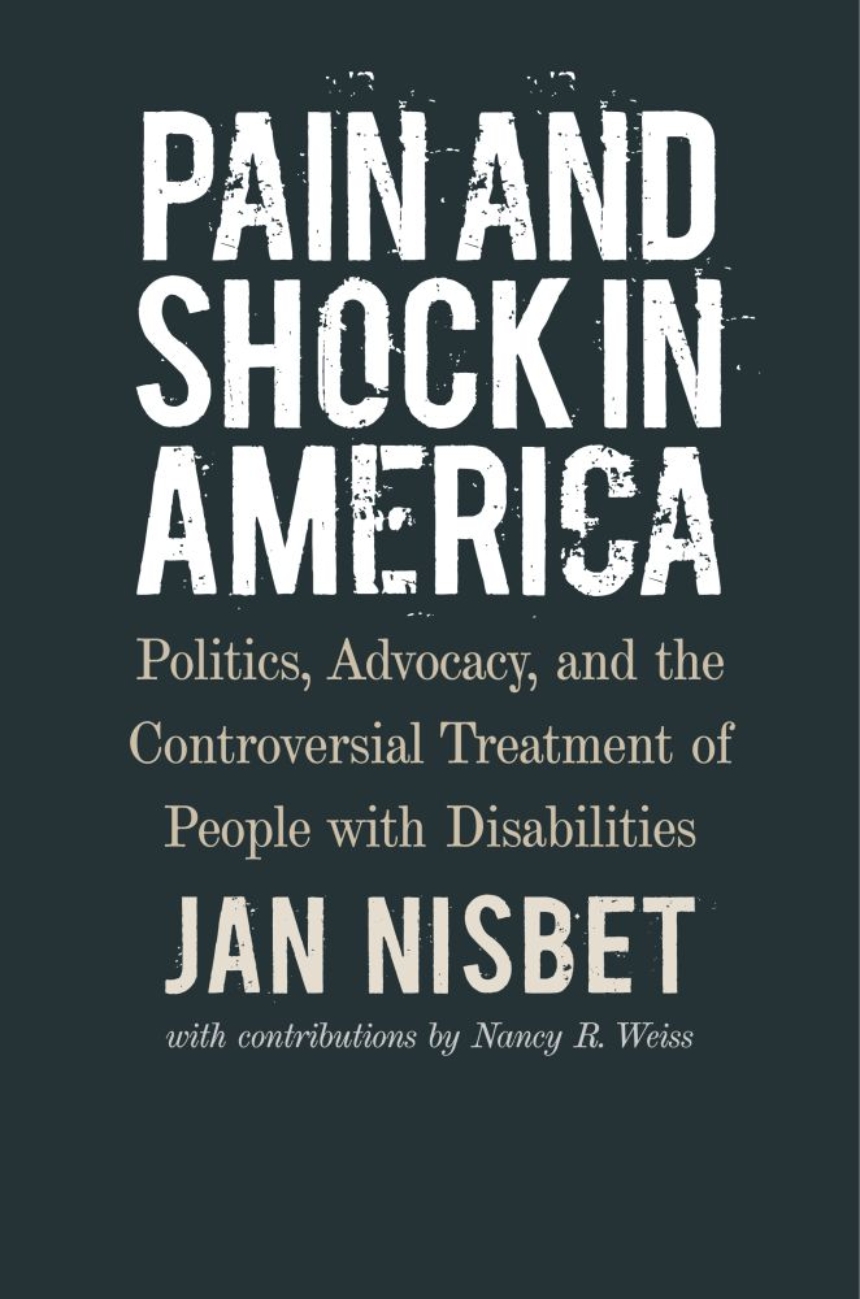Pain and Shock in America
Politics, Advocacy, and the Controversial Treatment of People with Disabilities
9781684580743
9781684580750
Distributed for Brandeis University Press
Pain and Shock in America
Politics, Advocacy, and the Controversial Treatment of People with Disabilities
The first book to be written on the Judge Rotenberg Center and their use of painful interventions to control the behavior of children and adults with disabilities.
For more than forty years, professionals in the field of disability studies have engaged in debates over the use of aversive interventions (such as electric shock) like the ones used at the Judge Rotenberg Center. Advocates and lawyers have filed complaints and lawsuits to both use them and ban them, scientists have written hundreds of articles for and against them, and people with disabilities have lost their lives and, some would say, lived their lives because of them. There are families who believe deeply in the need to use aversives to control their children’s behavior. There are others who believe the techniques used are torture. All of these families have children who have been excluded from numerous educational and treatment programs because of their behaviors. For most of the families, placement at the Judge Rotenberg Center is the last resort.
This book is a historical case study of the Judge Rotenberg Center, named after the judge who ruled in favor of keeping its doors open to use aversive interventions. It chronicles and analyzes the events and people involved for over forty years that contributed to the inability of the state of Massachusetts to stop the use of electric shock, and other severe forms of punishment on children and adults with disabilities. It is a long story, sad and tragic, complex, filled with intrigue and questions about society and its ability to protect and support its most vulnerable citizens.
For more than forty years, professionals in the field of disability studies have engaged in debates over the use of aversive interventions (such as electric shock) like the ones used at the Judge Rotenberg Center. Advocates and lawyers have filed complaints and lawsuits to both use them and ban them, scientists have written hundreds of articles for and against them, and people with disabilities have lost their lives and, some would say, lived their lives because of them. There are families who believe deeply in the need to use aversives to control their children’s behavior. There are others who believe the techniques used are torture. All of these families have children who have been excluded from numerous educational and treatment programs because of their behaviors. For most of the families, placement at the Judge Rotenberg Center is the last resort.
This book is a historical case study of the Judge Rotenberg Center, named after the judge who ruled in favor of keeping its doors open to use aversive interventions. It chronicles and analyzes the events and people involved for over forty years that contributed to the inability of the state of Massachusetts to stop the use of electric shock, and other severe forms of punishment on children and adults with disabilities. It is a long story, sad and tragic, complex, filled with intrigue and questions about society and its ability to protect and support its most vulnerable citizens.
432 pages | 18 halftones, 2 tables | 6 x 9 | © 2021
Education: History of Education, Psychology and Learning
Sociology: Medical Sociology
Reviews
Table of Contents
List of Illustrations
Foreword
Acknowledgments
Chapter I. A Long Story
Chapter II. How We Got to This Place
Chapter III. Encouraged to Expand to California
Chapter IV. Pushing Back
Chapter V. The Death of Vincent
Chapter VI. The Food and Drug Administration Permits the Use of Electric Shock on People with Disabilities
Chapter VII. Here Comes National Institutes of Health: A National Outcry After the Office for Children’s and Mary Kay Leonard’s Loss to BRI
Chapter VIII. Staging the Next Battleground
Chapter IX. Bad Faith or Responsible Government: Another Attempt to Limit the Use of Aversives
Chapter X. Contempt
Chapter XI. More Legal Issues and Advocates Take Action: Weiss and Nisbet
Chapter XII. The FDA Bans the Electric Shock Device: A Final Ruling? Weiss and Nisbet
Epilogue
Chronology
Endnotes
Biographical Note
Foreword
Acknowledgments
Chapter I. A Long Story
Chapter II. How We Got to This Place
Chapter III. Encouraged to Expand to California
Chapter IV. Pushing Back
Chapter V. The Death of Vincent
Chapter VI. The Food and Drug Administration Permits the Use of Electric Shock on People with Disabilities
Chapter VII. Here Comes National Institutes of Health: A National Outcry After the Office for Children’s and Mary Kay Leonard’s Loss to BRI
Chapter VIII. Staging the Next Battleground
Chapter IX. Bad Faith or Responsible Government: Another Attempt to Limit the Use of Aversives
Chapter X. Contempt
Chapter XI. More Legal Issues and Advocates Take Action: Weiss and Nisbet
Chapter XII. The FDA Bans the Electric Shock Device: A Final Ruling? Weiss and Nisbet
Epilogue
Chronology
Endnotes
Biographical Note

